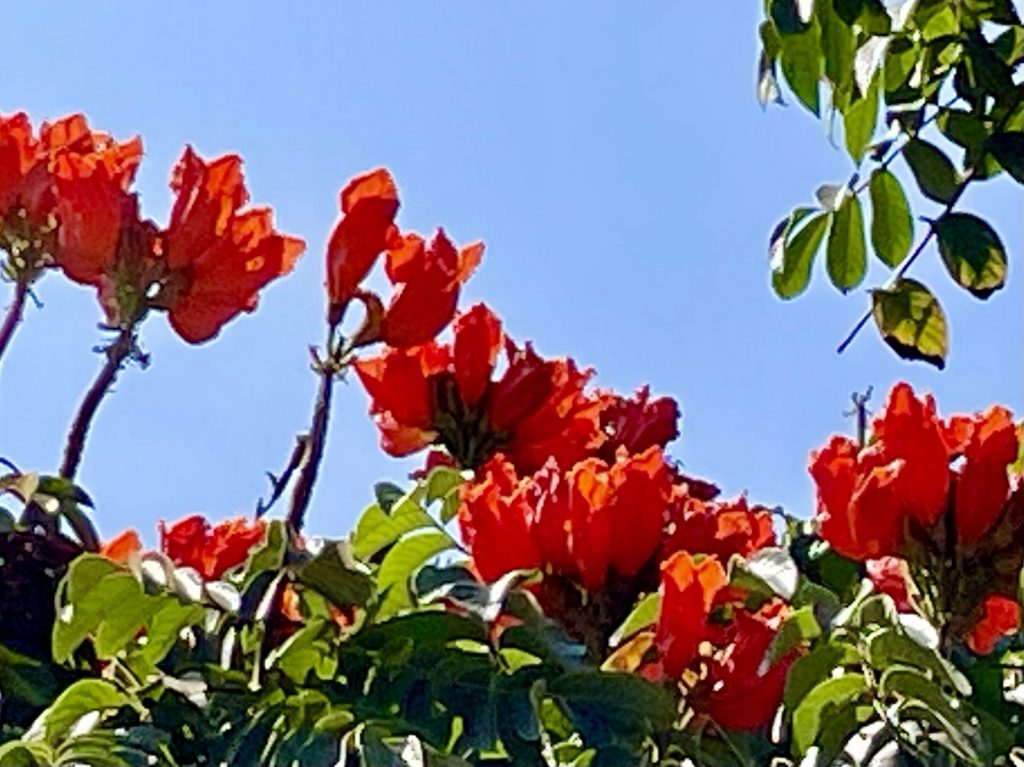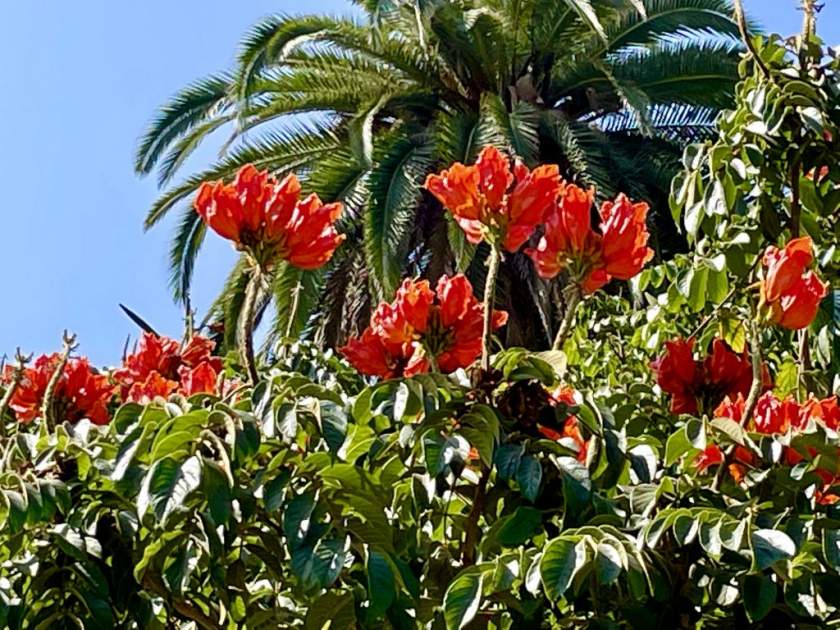Spathodea campanulata is an evergreen, tropical tree. It is from the Bignoniaceae family of plants. They also call it the African Tulip Tree, Fountain Tree, Nandi Flame, Nile Flame, Squirt Tree, Uganda Flamande, and Flame Tree of Thika. This tree is native to tropical Africa. In its native habitat, and grows to 80ft or 26m tall. However, in other regions, it only grows to 35ft or 12m tall.

In other languages, they call it: Fakkelboom, Afrika-vlamboom in Afrikaans, Immortel Etranger in French, Rugtoora in Hindi, African Poomaram in Malayalam, Panchut-Panchut in Malay, Amapola, Espatodea, Tulipan Africano, in Spanish.
Spathodea campanulata has a rough-textured trunk that is grayish. The foliage is opposite, pinnately compound, and leathery and dark green. The leaves start as bronze-colored and then turn green. Spathodea campanulata flowers in late summer or autumn. The flowers grow in terminal clusters and are tulip-shaped, orangish-red, and have five petals. These flowers hold water and are rather popular with birds. Spathodea campanulata flowers are bisexual and zygomorphic. Its seeds grow in brownish elongated pods and are thin, flat, and winged.

How to grow Spathodea campanulata:
When it comes to growing and maintaining Spathodea campanulata, also known as the African Tulip Tree or Flame of the Forest, there are some important considerations to keep in mind:
Sun Exposure: Spathodea campanulata thrives in full sun conditions. Ensure that you select a location where the tree will receive ample direct sunlight throughout the day.
Soil Requirements: This tree is adaptable to various soil types, including sandy, loamy, and clay soils. However, it is crucial to ensure that the soil is well-drained to prevent waterlogging. Adequate drainage helps avoid root rot and other moisture-related issues.
Watering: While Spathodea campanulata can tolerate periods of drought once established, it benefits from regular watering, especially during dry spells. Provide deep, thorough watering sessions to promote healthy root development. However, avoid overwatering, as it can lead to waterlogged soil and root rot.
Disease and Pest Resistance: Spathodea campanulata is generally resistant to diseases and pests. However, it is still important to monitor the tree for any signs of issues such as fungal infections or insect infestations. Promptly address any problems that arise by applying appropriate treatments or seeking professional advice.
Invasiveness: It is crucial to note that Spathodea campanulata is considered invasive in many tropical regions, including Hawaii and the Pacific Islands. Before planting this tree, it is essential to research and understand the local regulations and the potential environmental impact it may have on the ecosystem.
In addition to these care guidelines, regular pruning can be beneficial for maintaining the shape and size of the tree. Prune any dead or diseased branches, as well as any crossing or crowded branches, to promote proper airflow and overall tree health.
Overall, Spathodea campanulata is a striking tree known for its showy, tulip-like flowers and large, glossy foliage. It can add a bold tropical touch to gardens and landscapes. However, it is essential to be mindful of its invasiveness in certain regions and to provide the appropriate growing conditions to ensure its successful growth.





